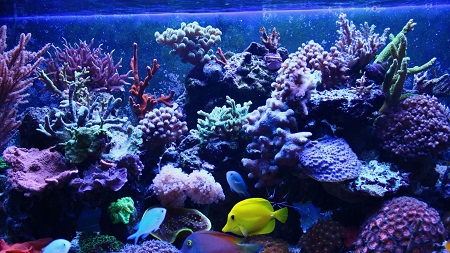In the rich and diverse world of aquatic life, Peiscans have emerged as a fascinating subject of study for marine biologists and enthusiasts alike. Often considered a hidden gem in the realm of underwater species, Peiscans offer unique insights into aquatic ecosystems and evolutionary biology. This article delves into the intriguing aspects of Peiscans, including their classification, habitat, behavior, and their significance in marine research.
What are Peiscans?
Peiscans are a lesser-known group of marine creatures that fall under the category of Pisces, the scientific term for fish. However, the term “Peiscans” specifically refers to a subset of fish characterized by their unique physical and behavioral traits. These fish are notable for their adaptability to various marine environments and their distinctive evolutionary features.
Classification and Species
- Taxonomy
- Kingdom: Animalia
- Phylum: Chordata
- Class: Actinopterygii (ray-finned fish)
- Order: Varied depending on specific species
Peiscans encompass several species across different genera and families. They are part of the larger class of ray-finned fish but are distinguished by their specific adaptations and evolutionary traits.
- Notable Species
- Peiscan 1: Known for its vibrant coloration and unique dorsal fin structure.
- Peiscan 2: Features bioluminescent properties that aid in communication and predation.
Habitat and Distribution

Peiscans are found in various marine environments, ranging from shallow coastal waters to deep oceanic regions. Their habitat preferences can vary widely depending on the species:
- Coastal Areas: Some Peiscans thrive in the warm, nutrient-rich waters of coral reefs and mangrove swamps. These environments offer abundant food sources and shelter.
- Open Ocean: Other species are adapted to the open ocean, where they exhibit behaviors suited for the vast, pelagic environment.
- Deep Sea: Certain Peiscans inhabit the deep sea, where they have adapted to extreme conditions such as high pressure and low temperatures.
Behavior and Adaptations
- Feeding Habits
- Carnivorous: Many Peiscans are carnivorous, preying on smaller fish, crustaceans, and invertebrates. Their hunting techniques are often specialized and adapted to their specific environment.
- Filter Feeding: Some species use filter-feeding methods to capture plankton and other microscopic organisms from the water.
- Reproduction
- Spawning: Peiscans exhibit a variety of reproductive strategies. Some species engage in mass spawning events, while others lay eggs in protected areas or on the seafloor.
- Parental Care: In some species, parental care is provided, with one or both parents guarding the eggs and ensuring their survival.
- Adaptations
- Bioluminescence: Certain Peiscans have developed bioluminescent abilities to attract prey or communicate with other members of their species.
- Camouflage: Adaptations for camouflage help Peiscans blend into their surroundings, making them less visible to predators and prey.
Ecological Importance
- Ecosystem Role
- Food Web: Peiscans play a crucial role in the marine food web. They are both predators and prey, contributing to the balance of marine ecosystems.
- Nutrient Cycling: Their feeding and excretion contribute to nutrient cycling, which supports the health and productivity of their habitats.
- Indicator Species
- Environmental Health: The health and population dynamics of Pei scans can serve as indicators of the overall health of marine ecosystems. Changes in their numbers or behavior may signal environmental changes or threats.
Conservation and Research
- Threats
- Overfishing: Many Pei scans face threats from overfishing, which can deplete their populations and disrupt marine ecosystems.
- Habitat Destruction: Coral reef destruction, pollution, and climate change pose significant risks to the habitats of Pei scans.
- Conservation Efforts
- Marine Protected Areas: Establishing marine protected areas helps safeguard the habitats of Peiscans and other marine life.
- Research and Monitoring: Ongoing research and monitoring are essential for understanding the needs of Peiscans and developing effective conservation strategies.
Conclusion
Peiscans, with their unique characteristics and ecological significance, represent a fascinating aspect of marine biology. Their diverse species, adaptive behaviors, and crucial roles in marine ecosystems make them a subject of great interest and importance. By continuing to study and protect these remarkable fish, we can enhance our understanding of marine life and contribute to the preservation of our oceans.
For more information on Pei scans and marine biology, visit [reputable marine research websites] and stay updated with the latest findings and conservation efforts.
